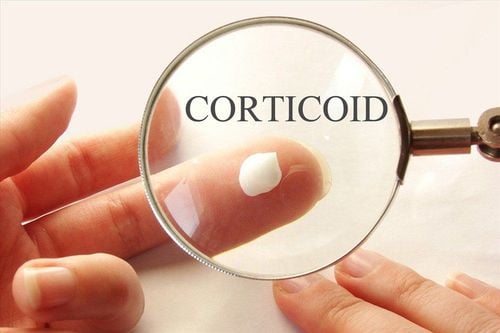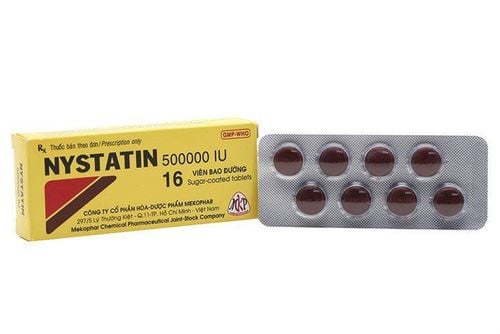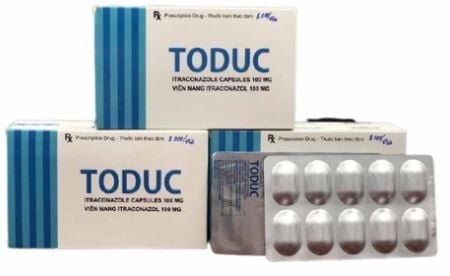This is an automatically translated article.
Cadiconazole medicine contains Ketoconazole with the effect of treating infections caused by fungi. So what is Cadiconazole and how should it be used correctly?
1. What is Cadiconazole?
Cadiconazole medicine contains the main ingredient Ketoconazole 200mg and is made in the form of tablets. Ketoconazole is a broad-spectrum antifungal drug with broad activity against many pathogenic fungi such as mucosal fungi, skin surface fungi or visceral fungi. In addition, the drug is also active against some gram-positive bacteria.
The general mechanism of action of ketoconazole and antifungal drugs is relatively similar thanks to the azole group with the ability to inhibit alfa demethylase. This is an enzyme that contributes to the synthesis of ergosterol. Since then, ketoconazole will prevent the synthesis of ergosterol and lipids of the fungal cell membrane, helping to change the permeability of the cell membrane and suppress the growth of the fungus. At low doses, the drug has fungicidal and fungicidal effects when used in high doses.
2. Indications of the drug Cadiconazole
Cadiconazole is indicated for use in the following cases:
Patients with fungal skin, hair and nails due to infection with skin fungi or yeasts such as ringworm, ringworm, onychomycosis, Periungual Candida infection, Pityrosporum folliculitis, scalp fungus ... Especially these infections cannot be treated locally due to widespread lesions or because of deep fungal infection in the skin, so they do not respond. response to local treatment. The patient has a yeast infection in the gastrointestinal tract. Cases of recurrent or chronic vaginal candidiasis that have not responded to topical therapy. Paracoccidioides infections, visceral fungal infections such as visceral candidiasis, Histoplasma, Blastomyces, Coccidioides. Prophylactic treatment for patients at risk of developing resistance to fungi. Ketoconazole does not have a high ability to penetrate the central nervous system and should not be used in the treatment of fungal meningitis with oral ketoconazole.
3. How to use Cadiconazole
Ketoconazole is for oral use and should be taken with meals for maximum absorption.
Adults:
Treatment of fungal infections of the skin, gastrointestinal tract and visceral fungi with 1 tablet/day (200mg) with meals. In case an adequate response is not achieved, it may be increased to 2 tablets/day (400mg) with meals. Treat vaginal candidiasis by taking 2 tablets (400mg) with meals, once a day. Children:
Children weighing between 15-30kg: Take 100mg once a day with meals. Children weighing more than 30kg can take the same dose as adults. The principle of fungal treatment is not to interrupt until at least 1 week after all symptoms have disappeared and the results are negative in all cultures.
4. Contraindications of the drug Cadiconazole
Ketoconazole is not contraindicated in patients with acute or chronic liver disease or with a history of hypersensitivity to the drug.
Contraindicated to use the following drugs with ketoconazole: Terfenadine, triazolam, astemizole, cisapride, quinidine, oral midazolam, pimozide.
5. Some side effects of the drug Cadiconazole
Common side effects when using ketoconazole include gastrointestinal manifestations such as gastrointestinal disturbances, abdominal pain, nausea and diarrhea.
More rare cases have been reported including headache, menstrual disturbances, reversible elevations of liver enzymes, dizziness, paresthesias, photophobia and allergic reactions.
6. Interactions between Cadiconazole and other drugs
Some drug classes that have the potential to interact if used at the same time as Cadiconazole include:Enzyme inducers such as rifampicin, carbamazepine, rifabutin, isoniazid and phenytoin. These drugs all significantly reduce the bioavailability of ketoconazole. Ritonavir has the potential to increase the bioavailability of ketoconazole. Therefore, in the case of co-administration, a reduction in the dose of ketoconazole should be considered. Above is the information about the use of Cadiconazole, patients need to read carefully and consult their doctor before using to get the best treatment results.













